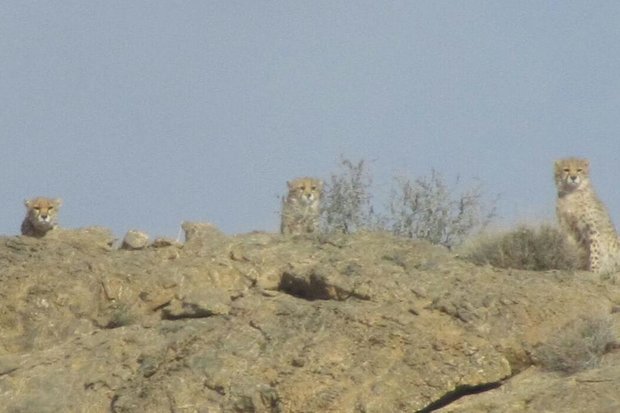Twenty-one Asiatic cheetahs have been observed in the north-central province of Semnan since the beginning of the current Iranian calendar year (March 21), Amir Abdous, head of the provincial department of environment (DOE), has announced. Emphasizing that the plan to preserve the cheetahs in Iran is to protect it in its natural habitat, he said that the success achieved in the reproduction of the endangered species in their habitat is greater than that of the captive breeding projects.
Noting that the most important threat to cheetah habitats is the presence of livestock and herding dogs, he highlighted that currently, about 500,000 hectares of the 1.5 million-hectare area of Turan – including the entire 100,000-hectare area of Turan National Park – have been cleared of livestock, and a safe haven has been created at the Turan Biosphere Reserve for cheetahs.
According to the agreement between the Forests, Rangelands, and Watershed Management Organization and the DOE, only one-fifth of the protected area and wildlife sanctuaries can be evacuated from livestock as a safe area for cheetahs.

Based on photos caught on cameras and local people sightings, 21 cheetahs have been observed in Semnan province since the beginning of this year, and 13 of them have identity cards, he stated.
He went on to say that the images of these cheetahs were clear and could be issued in birth certificates, as the certificates are based on the spots on the cheetahs’ body, which are unique to each.
The world’s fastest mammal, capable of reaching speeds of 120 kilometers per hour, once stalked habitats from the eastern reaches of India to the Atlantic coast of Senegal, once their numbers have stabilized in parts of southern Africa, but they have practically disappeared from northern Africa and Asia.
The subspecies “Acinonyx jubatus venaticus”, commonly known as the Asiatic cheetah, is critically endangered, according to the International Union for Conservation of Nature, with fewer than 50 believed to remain in Iran.
The cheetah thrives in open lands, small plains, semi-desert areas, and other open habitats where prey is available. The Asiatic cheetah mainly inhabits the desert areas around Dasht-e Kavir in the eastern half of Iran, including parts of the Kerman, Khorasan, Semnan, Yazd, Tehran, and Markazi provinces. Most live in five protected areas, Kavir National Park, Touran National Park, Bafq Protected Area, Darreh Anjir Wildlife Refuge, and Naybandan Wildlife Reserve.
Roads fragmenting cheetahs’ habitats are the main threats for the species, while guard dogs and stray dogs, drought spells, decreasing population of the prey species to support the cheetahs, and habitat loss are also other factors endangering the sparse population of the cheetahs in the country.






